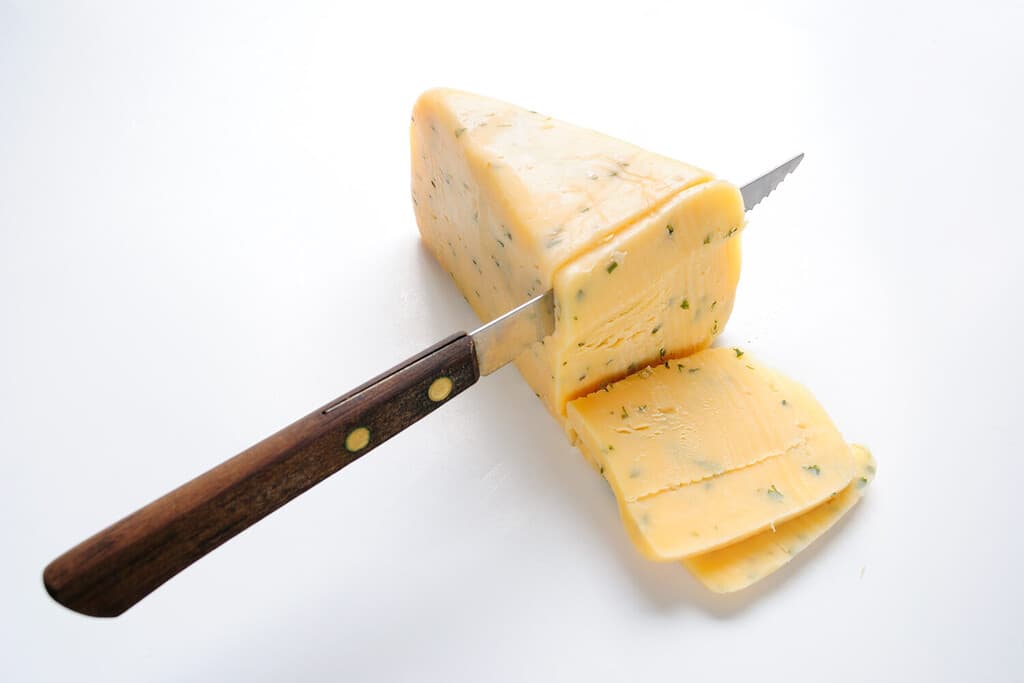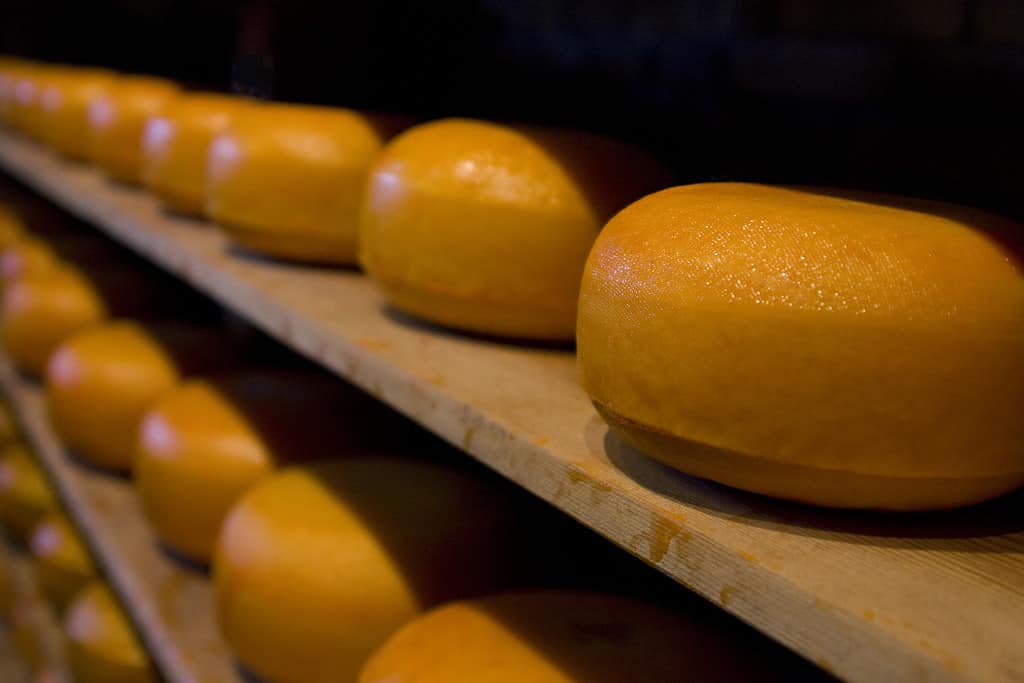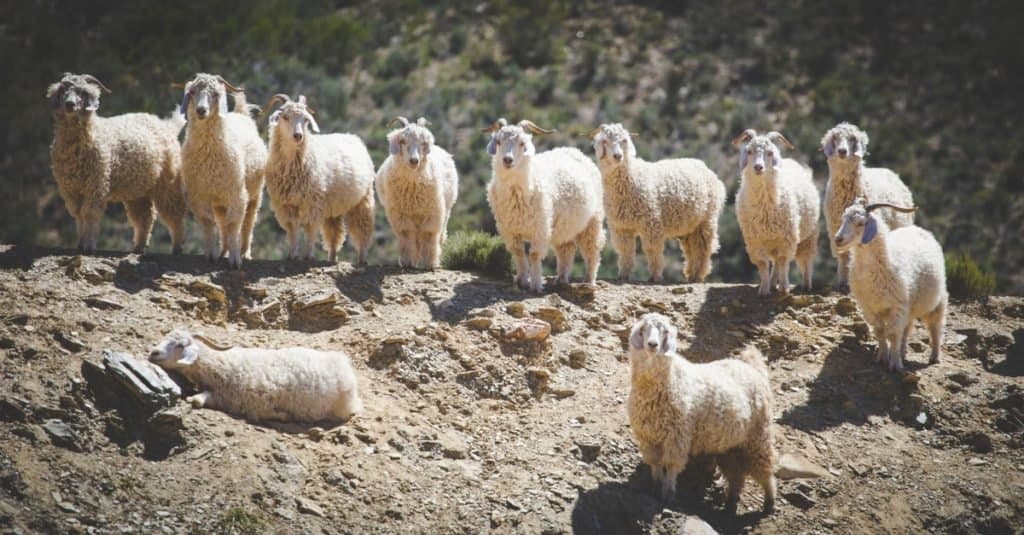Cheese is a nearly universally loved food. Almost every nation in the world has developed their own kind of cheese, each with their own flavor, method, and uses. Cheesemaking can be traced back over 4,000 years to murals decorating the walls of ancient Egyptian tombs, but actually predates recorded history — we have no idea when or where the first cheese was made. Now, cheese is a tasty part of everyday life. With so many types of cheese to explore, let’s take a look at some of the cheeses that start with O.
1. Olomoucké Tvarůžky

The first recorded mention of Olomoucké tvarůžky can be traced to 1452.
Named after the city of Olomouc in the Czech Republic, soft Olomoucké tvarůžky cheese packs a pungent scent, strong taste, and distinctive yellow color. This cheese has been produced in the villages that surround Olomouc since the 15th century, consisting of skimmed cow’s milk mixed with flavorings, then shaped into discs and ripened. The name and method for Olomoucké tvarůžky has been designated as a Protected Geographical Indication (PGI) by the European Union since 2010.
2. Oltermanni

Oltermanni gets its name from the Finnish word for “wise man.”
Many compare Oltermanni to a softer, less salty havarti or a less-sharp Muenster. Finland’s Oltermanni is made from pasteurized cow’s milk, which results in a smooth, almost-spreadable consistency. It’s often enjoyed on rye bread, with fresh fruit, or with wine. Oltermanni comes in both slice-able rounds and tubs for more spreadability.
3. Oázis

Full of herbs and smokiness, Oázis is a family favorite in Hungary.
©Sean Pavone/Shutterstock.com
Oázis is well-known throughout Hungary for its robust, smoky flavor. This cheese is made from cow’s milk, shaped into six-pound blocks, then smoked. Shoppers can find Oázis in blocks or slices, perfect for adding to any dish that needs a kick of flavor.
4. Oscypek

Oscypek’s shaping and design comes from hand-carved molds.
©Pawel Swiegoda (Paberu) / CC BY-SA 2.5 – Original / License
This uniquely shaped cheese comes only from the Tatra Mountains region of Poland and dates back to 1416. The recipe and method for Oscypek have been registered under the EU’s Protected Designation of Origin (PDO) since 2008. Sheep’s milk is then salted and turned into cottage cheese, which is then washed and strained repeatedly until only the solids remain. Shepherds then press these solids into long oval-like shapes, soak the cheese in brine for a night, then hot-smoke the cheese for up to two weeks. The result tastes smoky, salty, and sweet. Oscypek pairs beautifully with cranberry jam or beer.
Oscypek is very similar to the Slovakian Oštiepok, but there are key distinctions. First, Oscypek can only be made between late April and early October, when the sheep have best access to fresh mountain grasses and produce the tastiest milk. Oscypek must contain at least 60% sheep’s milk, weigh between 132 and 176 pounds, and measure between six and nine inches long.
5. Oštiepok

Oštiepok is traditionally made with sheep’s milk, but modern versions contain more cow’s milk.
On the other side of the Tatra Mountains in Slovakia, a similar cheese is made. The Oštiepok trade name is also protected by the EU’s PDO distinction, though industrialization has diversified what Oštiepok can mean. Traditional Oštiepok is made from sheep’s milk, often described as half-fat. Using heat and rennet — a solution of enzymes that promote the curdling of milk — the curds are separated, pressed into an egg-like shape, washed, then soaked in a brine and smoked for two to three days. Oštiepok’s flavor provides a unique tang from the brine, smokiness, and a delicate but savory finish that pairs well with white wine or beer.
Less can be found about the particulars of Oštiepok’s production. However, thanks to the march of technology, Oštiepok is made both by shepherds in the traditional way and by commercial dairies using alternate methods. Some Oštiepok are now made with half sheep and half cow milk, or all cow’s milk. Some varieties aren’t smoked either.
6. Oka

Oka still relies on the specific bacteria in the original cellars for its rind coloration and flavor.
Trappist monks from Quebec, Canada tweaked their recipe for Port-du-Salut cheese and developed their own creation in 1893. Oka, named for the city the monastery resided in, has cemented Quebec as a main producer of Canadian cheese. Made from cow’s milk, Oka’s pungent aroma and creamy texture draw many in, while its light flavor of fruit and nuts sets the cheese apart from other commercial cheeses. Most varieties of Oka are still made from the original recipe and aged in the cellars of the original monastery.
7. Oaxaca

Oaxaca cheese pairs well with most other foods thanks to its light flavor.
Famous for its unbelievable stretchiness, Oaxaca cheese originates from the Mexican state of Oaxaca. Dominican friars first brought a type of string cheese to the area, but Oaxaca has made it all its own. Oaxaca cheese is a white, low-fat, cow’s milk cheese that develops its unique texture through a stretching method that’s similar to the way mozzarella is made. Oaxaca cheese’s lightly salty and mild flavor usually pairs with squash flowers and corn mixtures in quesadillas and empanadas.
8. Orla

Aging gives Orla its structure and depth of flavor.
©milogd/iStock via Getty Images
Strong and earthy, Orla comes from Ireland’s sheep and spans many categories. This cheese can range from semi-soft to hard, depending on how long it’s left to age. Orla production uses unpasteurized milk and heat to promote coagulation. It’s pressed into discs and aged for up to six months. Orla’s flavor sharpens as it ages, with notes of salt and the burnt-sugar flavor of sheep’s milk.
9. Ossau-Iraty

Depending on what season it’s made in, Ossau-Iraty’s flavor shifts between nutty and fruity.
Ossau-Iraty still holds tightly to its traditional roots. Made in the French Basque region, Ossau-Iraty uses sheep’s milk from the Basco-béarnaise, Red-face Manech, or Black-face Manech breeds only. This cheese doesn’t get cooked and is instead made through pressing. This cheese is one of just three sheep’s milk cheeses to be designated by France as an appellation d’origine contrôlée (AOC) product, which recognizes both the traditional methods and specific regions key to its production. Ossau-Iraty offers a smooth, firm texture with a flavor described as simultaneously herby, nutty, and fruity that’s developed by the six-month aging process.
10. Obruk (Divle)

Shepherds now use a combination of goat and sheep’s milk to make Divle Obruk.
©Dewald Kirsten/Shutterstock.com
Obruk is a remnant of a fading tradition in south-central Turkey. Made in the village of Divle (now known as Üçharman), this cheese is one of the few cheeses still aged in a sheepskin or goatskin sack. Divle Obruk uses both sheep and goat’s milk, curdled with both heat and rennet. The curds are collected and left to rest for many days, then soaked to reduce bitterness. Rocks are used to press the moisture out, then the curds are packed into the specialty sack for aging in a cave outside the village. Finished Divle Obruk contains the same mold strain as Roquefort, for a sharp top note that mellows out into hazelnut, sweet grass, and caramelized garlic.
Full List
We couldn’t dive into every type of cheese that starts with O. Here’s a quick list of all 20:
| Name | Country of Origin |
|---|---|
| Olomoucké tvarůžky | Czech Republic |
| Oltermanni | Finland |
| Oázis | Hungary |
| Oscypek | Poland |
| Oštiepok | Slovakia |
| Oka | Canada |
| Oaxaca | Mexico |
| Orla | Ireland |
| Ossau-Iraty | France |
| Olivet cendré | France |
| Ortolan | France |
| Obruk (Divle) | Turkey |
| Örgü peyniri | Turkey |
| Ol Sciür | Italy |
| Ormea | Italy |
| Orrengigo di Pistola | Italy |
| Ortier | Italy |
| Ostrica de montagna | Italy |
| Ossolano d’alpe | Italy |
| Omichka | Russia |
Honorable Mentions

Obatzda is
mostlycheese, flavored with butter and other spices.
Orda
Orda is another name for Urda in some languages, a popular unaged cheese in Southeastern Europe, primarily in Albania, Bulgaria, Macedonia, Ukraine, and Hungary. Urda uses the leftover whey from cow, goat, or sheep milk to form a paste-like cheese that’s shaped into half-spheres.
Obatzda
Obatzda is a delicacy from the German state of Bavaria. It consists of two-thirds aged soft cheese — such as Camembert or Romadur — and one-third butter. This rich, spreadable cheese often accompanies bread or pretzels and is seasoned with paprika, pepper, beer, horseradish, caraway seeds, or other flavors. While not a true cheese in itself, obatzda sounds cheesy and delicious enough to make our honorable mentions.
Thank you for reading! Have some feedback for us? Contact the AZ Animals editorial team.








